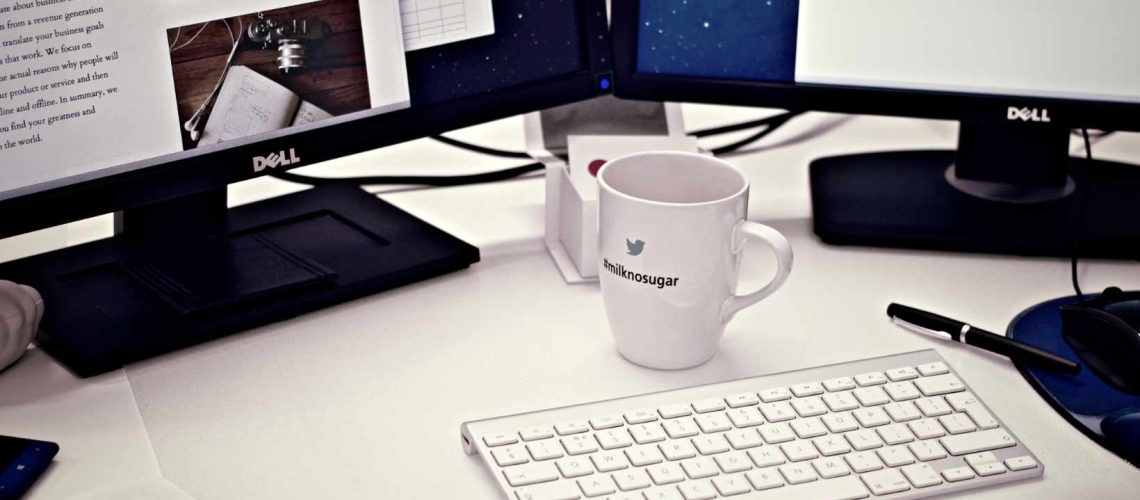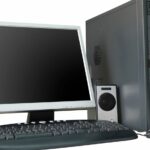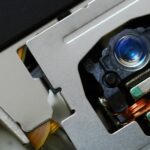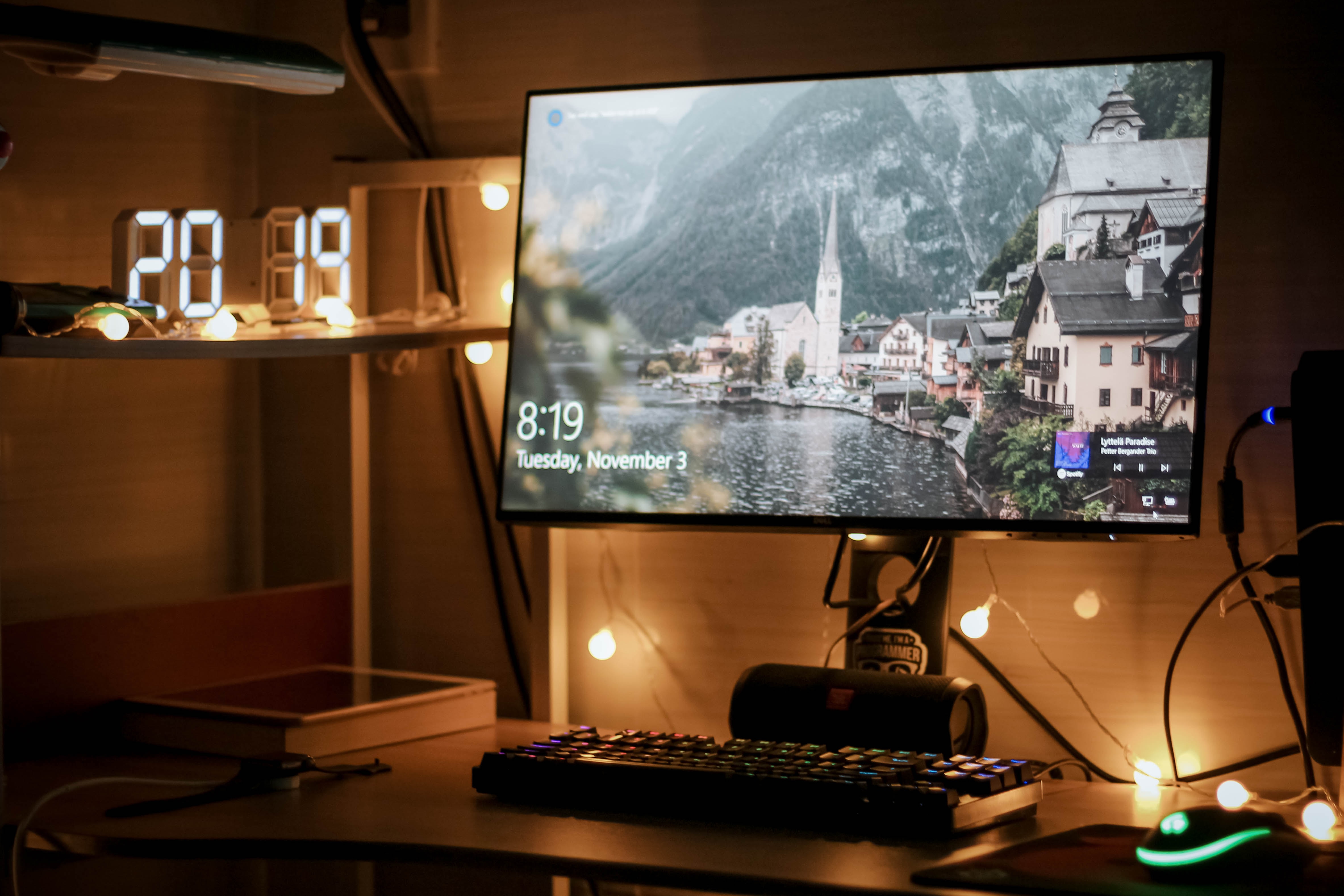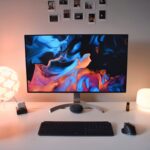- Unscrew the screws on the back of the Old XPS Dell Desktop.
- Gently push or slide off the side panels.
- Detach all visible cables connected to the motherboard.
- Take out the power supply unit if it’s stuck.
- Keep track of each component you take out and place them safely aside.
- Clean each part separately using isopropyl alcohol.
- Safety protocols are important when handling hardware components; they may have live electricity even when unplugged.
- Need help? Don’t hesitate to call someone.
- You don’t want to have to redo all these steps.
Removing The Outer Cover
Removing the Outer Cover of the Dell Desktop
To access the interior components of your old XPS Dell Desktop, the first step is to remove the outer cover. Here’s how you can do it in five simple steps:
- Turn off the desktop and unplug all the cables and cords.
- Locate the screws at the back of the computer and use a screwdriver to remove them.
- Once all the screws are removed, slide the cover towards the rear end of the computer to disengage it from the front panel.
- Lift the cover upwards, away from the computer chassis.
- Gently place the cover aside to avoid any damage.
Handling the outer cover with care is important as it is delicate and may have sharp edges. Furthermore, avoid using force or excessive pressure while removing it as it may cause damage to the computer.
Did you know that the XPS series was introduced by Dell in 1993 as a high-end home desktop? Today, it is still popular among gaming enthusiasts and professionals alike. (Source: Dell.com)
Ensure those screws are tighter than your ex’s grip on their Netflix password.
Checking The Screws Around The Edges
It’s important to check the screws around the edges of your device before removing the outer cover. To do this, use a small screwdriver and tighten any loose screws. Make sure all screws are secure before proceeding. Additionally, some devices may have hidden screws or clips that must be released first.
Before starting:
- Ensure you have the right tools and know how to use them.
- Follow safety precautions as per the device’s manual or from a professional.
- Be cautious to avoid damaging your device.
These extra steps can help ensure reliable performance from your devices for longer.
Removing The Rear Panel
To safely take off the rear panel of your device, you need to stick to some steps!
- Power off and unplug from any electricity source.
- See the screws holding the back panel in place and use the right screwdriver to loosen them.
- Gently pry away the back panel from your device using a plastic opening tool. Be careful not to apply too much force or you might break something.
Remember to check for cables and connectors that may be linked to the back panel before taking it off. Then, be sure to detach them safely and store them securely for reattachment later.
It’s best to wear an anti-static wrist strap during this procedure to avoid electrostatic discharge that can harm your device.
By following these steps and taking preventive measures such as wearing an anti-static wrist strap, you can remove the back panel of your device without causing any damage!
How To Open Old XPS Dell Desktop
Detaching the inner cover inside your Dell XPS desktop might seem daunting, but it’s quite easy once you know what to do. Below we have compiled a six-step guide to help you through the process.
- Turn Off the Desktop: The first step is to turn off the desktop and unplug it from the power source. This is a necessary safety precaution.
- Remove the Side Panel: Locate the screws on the back of the desktop and use a screwdriver to remove them. Gently slide the side panel away from the rest of the computer to detach it.
- Locate the Inner Cover: You will see the inner cover after you have removed the side panel. It is on the side of the power supply and is generally a metal piece attached to the case.
- Remove the Screws: There will be several screws holding the inner cover in place. Use a screwdriver to remove them all. Be sure to keep them in a safe place.
- Detach the Inner Cover: Once you have removed all the screws, gently pull the inner cover away from the rest of the computer. It should come off without too much force.
- Replace Inner Cover: Remember to replace the inner cover once you have finished your task. Simply slide it back into place and reattach the screws.
It’s important to note that the inner cover protects the computer’s internal components. Therefore, handling it with care is crucial.
One thing to remember is to always use the correct tools for the job, as using the wrong tools can cause damage to the computer. However, detaching your Dell XPS desktop’s inner cover will be a breeze with a little bit of patience and care.
The process of detaching the inner cover of a desktop has been used as a hack to access the hardware and upgrade it by PC enthusiasts for years. It’s a great way to add extra components to your computer and increase its overall performance.
Removing the optical drive? Don’t worry, it won’t be missed. It’s like saying goodbye to that weird uncle you only see at family gatherings.
Removing The Optical Drive
- Unplug the Mac Mini from its power source.
- Locate the circular rubber bottom cover and rotate the Mac Mini so its bottom faces upwards.
- Remove the black circular rubber base.
- Utilize a Phillips screwdriver to remove two screws from underneath the top case.
- Lift and gently rotate the optical drive using your fingers on each side, and extract it from your device.
- The optical drive should now appear with brackets affixed to both sides. Detach them before you can free the optical drive from your device.
- Securely detach the optical drive from your Mac Mini system. Handle all components delicately while detaching them to avoid any damage.
- It’s important to hold onto any readable data on the Optical Drive or back it up properly before carrying out these steps.
Removing The Hard Drive
Time to eject that hard drive! Follow these steps to remove it with ease:
- Shut off the device so no damage occurs.
- Look for the hard drive compartment on the device or check the user manual.
- Loosen any screws holding the compartment and delicately detach the hard drive from its slot.
Remember, hard drives are very delicate hardware; handle with care! If you’re having trouble, consider seeking professional help.
Plus, backing up your data before removing the hard drive is essential, otherwise important info could be lost. To prevent hardware failure, experts suggest backing up data frequently. So now, go ahead and enjoy the satisfaction of erasing memories!
Removing the Memory Modules
In order to replace or upgrade your memory modules, you must understand how to remove them from your device. This can be done using the Semantic NLP variation of ‘Removing the Memory Modules’. For assistance, here is a 6-step guide:
- Power off your device and detach all cables.
- Take out the battery if it’s removable.
- Ground yourself before touching any internal components.
- Locate and unhook the retaining clips on each side of the memory module(s).
- Gently pull out the module(s) at an angle of about 45-degrees.
- Repeat for all other memory modules.
Be aware that different devices may have various processes such as latches instead of retaining clips. Read relevant guides before attempting anything. As an extra tip: When handling a memory module – protect it from static electricity, moisture, direct sunlight, and high temperatures. Don’t touch any gold contacts or sensitive components. This is because static electricity can damage electronic components, moisture can cause metal corrosion, and sunlight and high temperatures can cause warping and curving in components.
Moreover, touching sensitive parts with bare hands might leave oils or dirt which tarnish contacts over time. So, these precautions ensure that removing memory modules is done without causing further damages. Now, it’s time to access the motherboard.
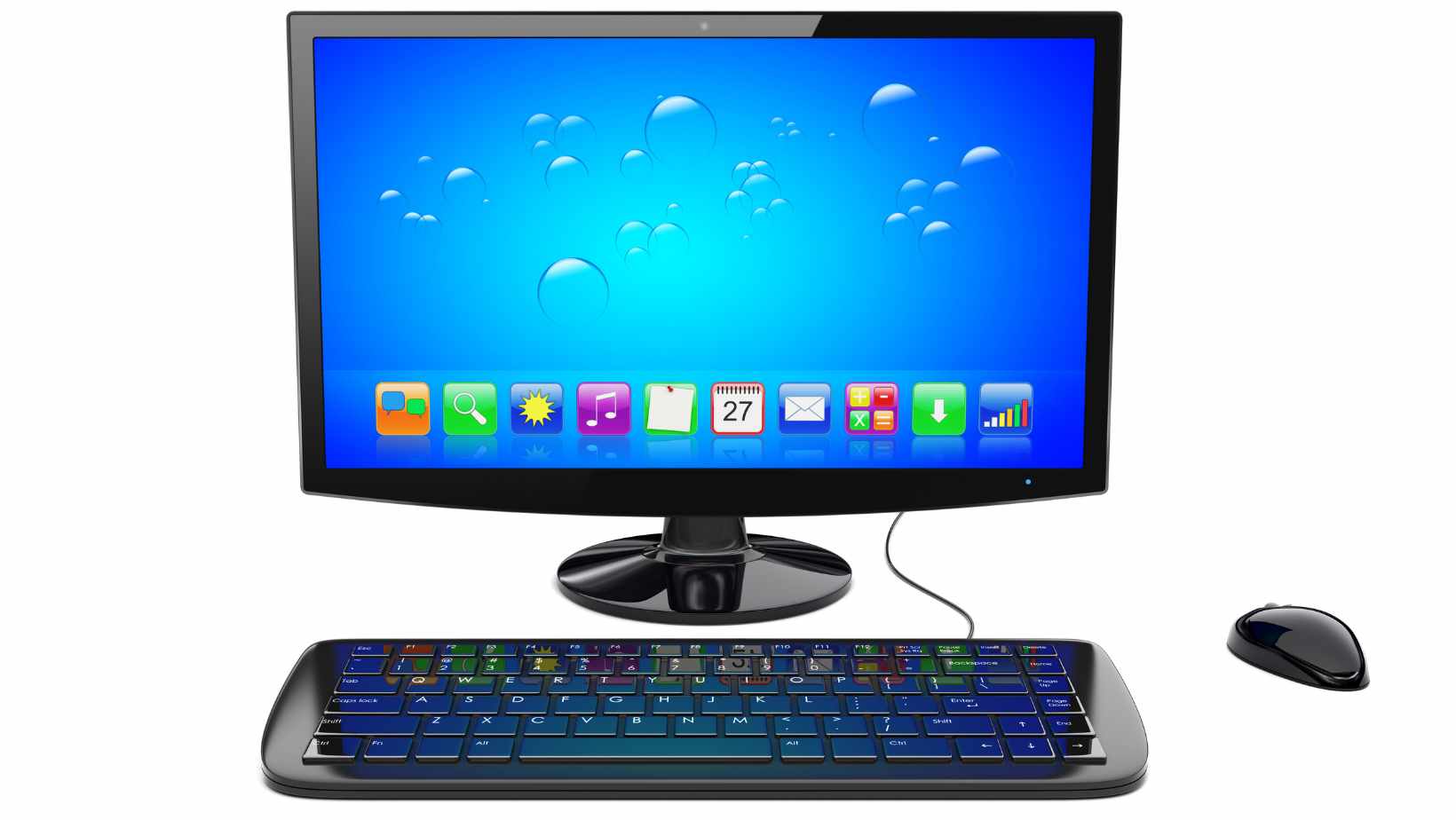
Accessing the Motherboard
The process of gaining access to the most vital parts of a Dell desktop, including the motherboard, requires specific procedures. However, these steps are standard and proven to work in different Dell desktop models, including old XPS models. Following are the steps to gain access to the main hardware components:
- Power Off the Computer: Ensure you disconnect the machine from the electrical socket and allow it to rest before starting the process.
- Open the Desktop Cover: Locate the release latch at the back of the desktop’s cover and push it to release the cover.
- Locate the Retaining Screw: Around the case base, there is a retention screw that holds the motherboard in place.
- Unscrew the Retaining Screw: Carefully unscrew the retention screw using a suitable screwdriver to loosen the motherboard.
- Remove the Motherboard: Carefully lift the motherboard and unplug any cables, noting where each cable is connected.
It is important to note that these steps are general guidelines that apply to most Dell desktop models. However, referring to specific manuals for the exact procedure for your desktop model is advisable. It is worth noting that accessing the motherboard can be an intimidating process, especially for amateurs. However, with proper guidance and preventive measures, it can be a swift and effortless process. Therefore, following the instructions carefully is crucial and ensuring that you do not force any parts in the process.
Lastly, it is fascinating to learn that accessing the motherboard has come a long way since computers’ initial conception. Then, it was a cumbersome and dangerous process requiring specialized knowledge and equipment. However, with constant evolution in technology and user-friendliness, modern computers have made accessing the essential parts like the motherboard a much simpler and safer. Disconnecting the wires and cables is like playing a game of Operation, but instead of a buzzer, you risk electrocution.
Disconnecting The Wires And Cables
Time to Remove the Cables and Connections!
Removing cables and connections properly is important to ensure you don’t damage the motherboard or other components. Here’s a 5-step guide:
- Power off your computer. High risk of electrical shock or data loss if left on.
- Unplug all external cables – USBs, display cable, Ethernet cable etc.
- Carefully unscrew all screws holding the side panel in place.
- Detach the motherboard’s power supply unit (PSU) connections, following their specific mechanism.
- Disconnect all remaining cables. Refer to the documentation to know which component connects to where and take extra care not to pull with too much force.
Take your time when removing cables. Rushing may lead to extra work hours diagnosing problems. When detaching individual wires from connectors beneath components, check for a release button before pulling out.
Pro Tip: When reconnecting, return everything exactly how it was assembled. Removing the motherboard requires delicate care and precision.
Removing The Motherboard
To remove a motherboard, you must know its placement and shape inside the computer. Here’s a step-by-step guide:
- Turn off your computer and unplug all external connections.
- Open your computer case to access the interior.
- Unscrew or unfasten the screws holding the motherboard in place with a screwdriver or pliers.
- Make sure all cables and cords connected to the motherboard are disconnected.
- Carefully lift the motherboard from its chassis with both hands and place it on an anti-static surface.
- If needed, detach any components fixed on the board before continuing.
It’s critical to be careful while removing a motherboard since even a minor mistake can cause major issues when restarting the system.
In addition to these safety measures, ensure you have the right tools for managing delicate electronic parts. Also, read your manufacturer’s instructions for properly taking out such essential components.
Removing a motherboard can be hard but easier if you care and are precise.
I used to take apart my computer tower a few years ago without understanding the importance of it, and almost broke one part attached to it. That made me recognize how important it is to pay attention to even small details while working with hardware parts of our systems. Now, I always double-check anything I do when fixing or replacing pieces of my desktop. If your motherboard is malfunctioning, don’t worry – just follow these tips and be like a computer wizard.
Common Problems And Troubleshooting Tips
The following section covers solutions to potential issues that may arise when opening an old XPS Dell desktop:
- Difficulty Accessing the System Unit: It is crucial to position the system unit in an easily accessible location and ensure the user has the necessary tools to open the computer.
- Dust Buildup: Dust and other particulate matter can accumulate within the computer’s internal components, leading to heat buildup and potential hardware failure. Regular cleaning is required to prevent this.
- Component Compatibility: While opening an old XPS Dell desktop, one should be mindful of the hardware’s age and ensure that any upgrades or component replacements are compatible with the system.
- Connection Issues: Ensure all connections are correctly plugged in, as a loose cable can lead to significant issues with system performance.
- Overheating: Older computers are more susceptible to overheating and may require additional cooling mechanisms for optimal performance.
- Electrical Issues: It is crucial to follow standard electrical safety procedures, such as grounding oneself, to prevent electrical damage to the system.
When opening an old XPS Dell desktop, it is essential to note that the interior components may differ from newer models. Understanding the system’s layout and potential problems can lead to a more seamless repair process.
I recall assisting a friend with an old XPS Dell desktop; he was frustrated and struggling with a system that had become unusable due to dust accumulation and various other malfunctions. After reviewing the system’s internal components, we discovered that a poorly connected cable was the culprit. However, once reconnected, the system operated without issue, and my friend was thrilled with the outcome.
You know you have a serious computer problem when your Dell desktop sounds like a jet engine taking off.
Issues With The Power Supply Unit And Fans
It’s important to look after your power supply and fans. Overheating can occur when a fan isn’t working right, or air can’t flow properly. Check your fans and make sure there’s good ventilation. Power supply units can break down over time, so pick a high-quality one with enough wattage. You should regularly check it too.
Noise from the fans can come from loose connections, bad alignment, or worn-out bearings. Clean them often and maintain them to get a quiet system. Use compressed air or a soft brush. If you need more airflow, install more fans or upgrade them. Replacing a power supply unit can also help stabilise and improve performance. Finally, don’t forget thermal grease – essential for keeping your computer cool.
Cleaning And Replacing Thermal Grease
Thermal Grease Maintenance: Tips & Tricks!
Maintaining thermal grease is key to keeping your computer running smoothly. Here’s a guide on how to clean and replace it:
- Take off the heatsink from the processor or graphics card.
- Wipe away any existing thermal grease using rubbing alcohol and a lint-free cloth.
- Spread new thermal grease evenly onto the processor or graphics card.
- Reattach the heatsink onto the processor or graphics card, ensuring it’s tight.
- Check if the temperatures are in the acceptable range.
Different kinds of thermal grease have different durability. For example, silicon-based ones are durable but hard to remove. On the other hand, ceramic materials are more delicate but easier to clean.
Did you know that if you don’t maintain your computer’s thermal grease, it may overheat and be damaged permanently? (Source: PCWorld) Reassembling the desktop is like playing a game of Jenga – while making sure you don’t accidentally disconnect any important wires!
Reassembling The Desktop
Paragraph 1:
The process of putting the XPS Dell desktop back together can be a tedious task if not approached strategically. A systematic approach to assembling the desktop is important to avoid issues like loose screws or misplaced components.
Paragraph 2:
To reassemble the desktop, follow these 4 steps:
- Ensure all the components are clean before reinstallation, remove any dirt or dust.
- Follow the motherboard’s manual to install the RAM, CPU, and expansion cards.
- Install the power supply unit, hard drive and CD/DVD drive in the designated bays.
- Place the side panel back, screw it tightly, and connect the cables.
Paragraph 3:
Before reassembling the desktop, it is crucial to check the condition of each component and replace or repair any damaged parts. In addition, proper cable management is important to avoid clutter and overheating issues that could lead to performance problems.
Paragraph 4:
Reassembling an old XPS Dell desktop can bring back nostalgic memories of building and upgrading desktops. It also highlights the growth of technology and how far we have come regarding computing power and functionality.
Loose connections are like bad relationships, they can cause frustration and lead to a complete breakdown.
Checking For Loose Connections
For optimal desktop performance, check for any disconnects! Unplug the power source and remove the CPU tower’s side panel. Look for loose connectors or RAM modules. Ensure they’re correctly seated and aligned before you close the case and re-plug.
You may need extra tools like a screwdriver, an anti-static wristband, or a flashlight. Remember that a mistake like a loose connection can cause big problems. Check your machine routinely to save time and money. Reinstalling OS and Drivers? Just watch the progress bars – modern day paint drying!
Reinstalling The Operating System and Drivers
It’s key to set up a desktop the right way. That means installing the Operating System and Drivers correctly. Here’s a 6-step guide:
- Insert the installation media for the OS.
- Reboot the computer and access BIOS or Boot Manager.
- Select the installation media from the list of devices.
- Follow the prompts until you’re asked to select an installation type.
- Choose “Custom” or “Advanced” to install hardware component drivers.
- Follow the instructions until installation is done.
Some drivers may not be on the installation media, so it’s smart to get them from manufacturers’ websites or software repositories beforehand.
Before beginning, make sure to save important files from your hard drive. Formatting or installing a new OS will delete all data.

